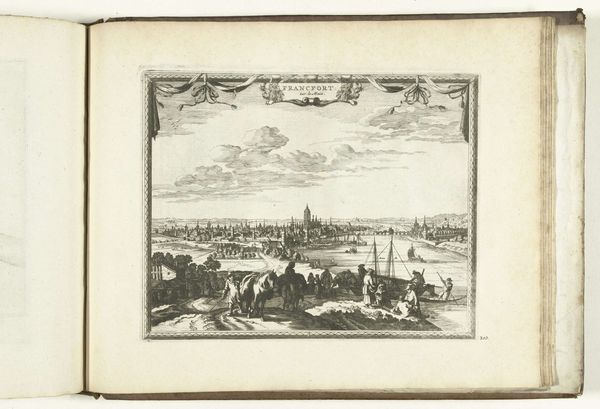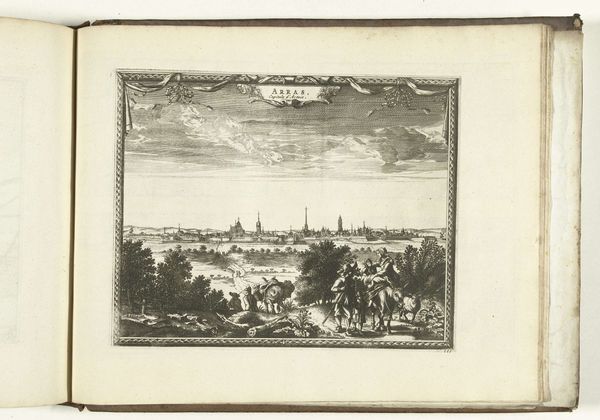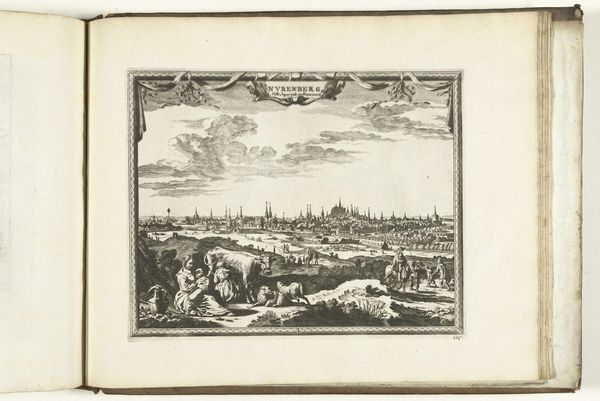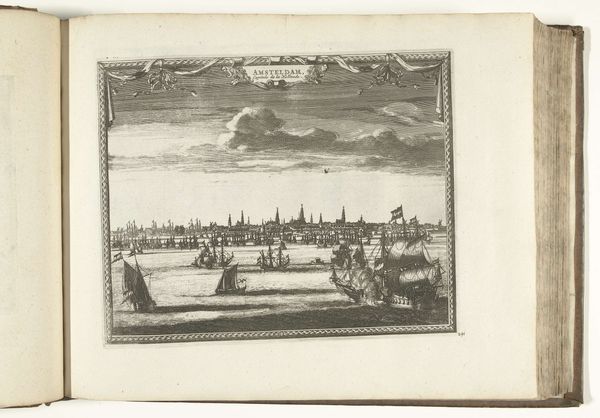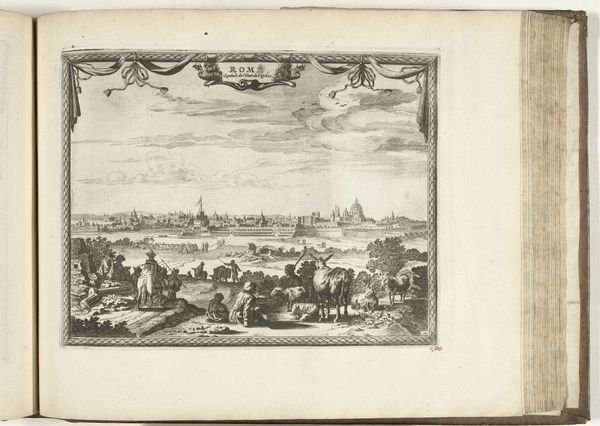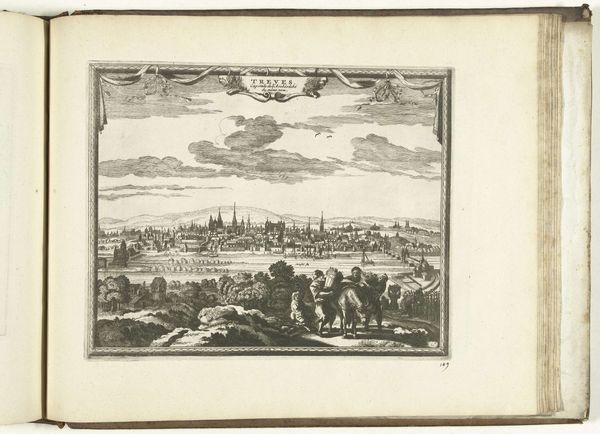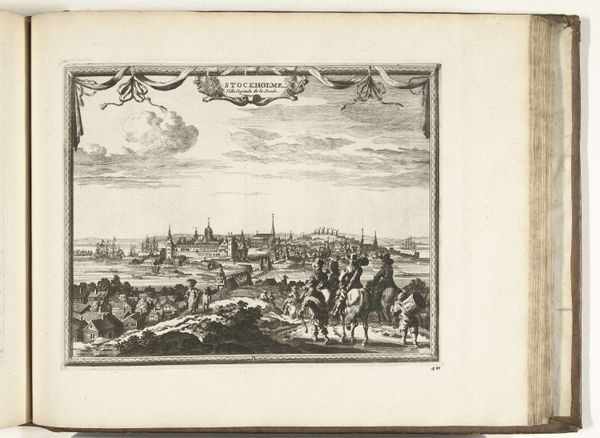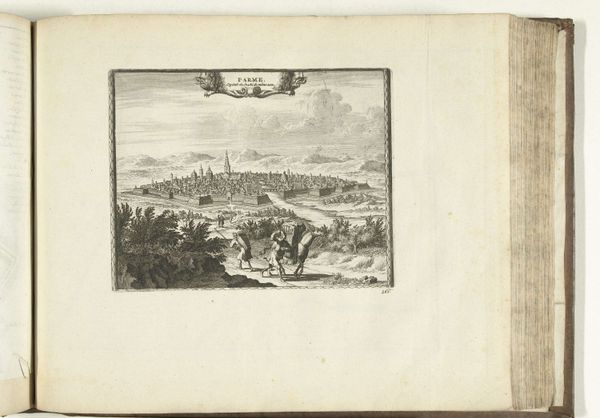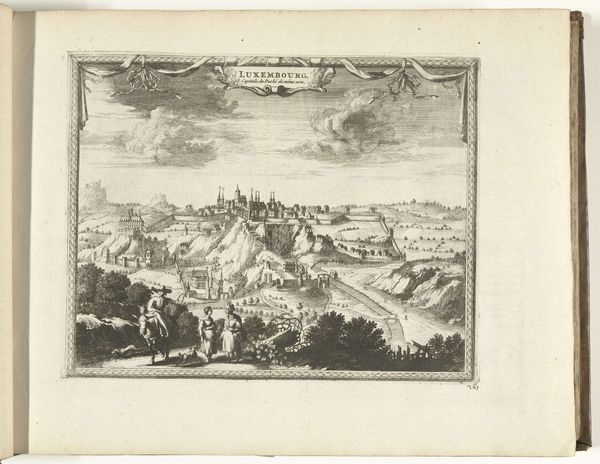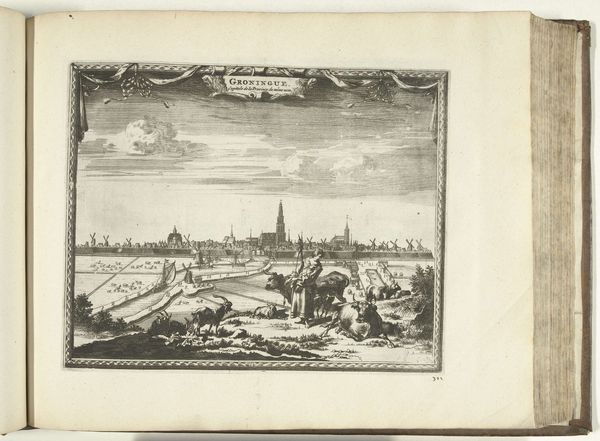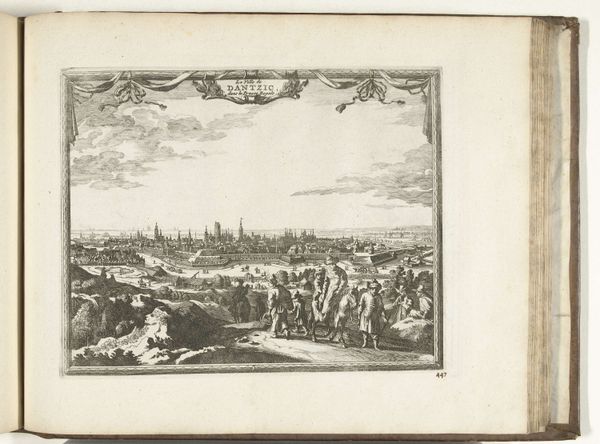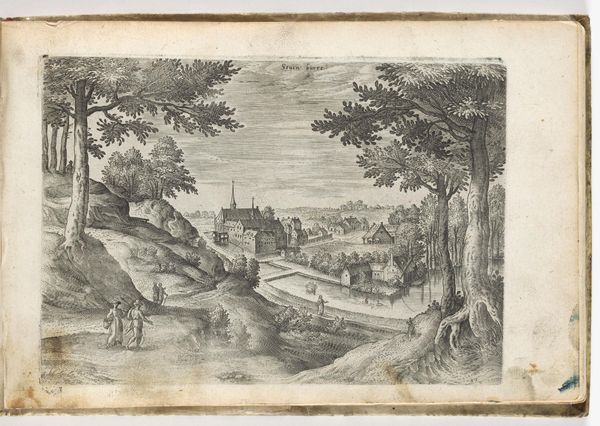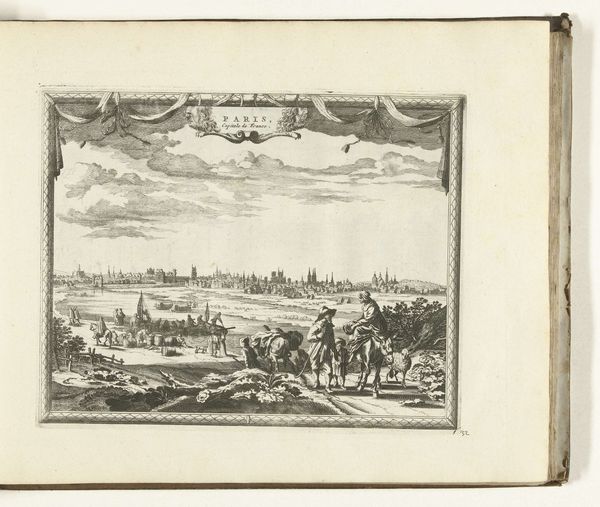
print, etching
#
baroque
# print
#
etching
#
landscape
#
cityscape
#
genre-painting
Dimensions: height 223 mm, width 274 mm
Copyright: Rijks Museum: Open Domain
Editor: Here we have an etching, "Gezicht op Leeuwarden, 1726," or "View of Leeuwarden, 1726," by an anonymous artist. The image has this sense of layered space – foreground figures, a middle ground with fields, and the city in the background, all framed decoratively. What symbolic language can we unlock here? Curator: Indeed, the layers are crucial. Note how the artist positions the viewer outside the city walls, almost as a privileged observer. The figures in the foreground, seemingly engaged in leisurely activities, could symbolize the daily life and prosperity that the city’s order ensures. Do you notice how the framing devices—the ribbons and foliage—are also classic symbols of abundance and civic pride? Editor: Yes, the foreground figures and decorations definitely give it a sense of idyllic peace. I didn't immediately notice the way it invites the viewer into this space. What do you make of the city's depiction itself? Is it a straightforward portrait, or is there more to it? Curator: Look closely at the skyline. The church spires, the windmills… These weren't just architectural features, but potent symbols of spiritual authority and economic power. The image projects a sense of enduring stability. But consider the transient nature of those foreground figures against the solid permanence suggested by the buildings and walls. A tension arises, doesn't it? Editor: Absolutely, that contrast is compelling! So it's less about the specific layout of Leeuwarden and more about projecting an idea of stability, authority and life well-lived within a safe society? Curator: Precisely. It’s an idealized representation meant to evoke feelings of civic pride and belonging. The cultural memory embedded in the image reinforces an existing narrative, celebrating the city as a cornerstone of its world. It tells a story. Editor: This has made me think about how cityscapes are designed as not only places, but as statements of culture and historical values, captured and frozen in time, still relevant today! Curator: Exactly! The visual echoes continue through centuries. The artist succeeded in capturing, not just a place, but a feeling, an ideology even.
Comments
No comments
Be the first to comment and join the conversation on the ultimate creative platform.
